Ruby Claudia Emily Davy, a prodigiously talented child born to musical parents in Salisbury, South Australia, in 1883, was one of Australia’s leading music teachers and the first woman in Australia to receive a Doctorate of Music.
Early Life and Introduction to Music
Ruby Davy was born in Salisbury, South Australia in 1883. Her parents, William Charles Davy and Louisa Davy (nee Litchfield), both had musical backgrounds with her mother a music teacher, while her father was an accomplished horn, cornet and trombone player. William supported the family through working in his family’s bootmaking business, while Louisa devoted herself to looking after Ruby. It was in this environment that Ruby’s musical interest and talent was identified and nurtured.
Encouraged by her mother, Ruby began playing and improvising on the piano from an early age. She began composing short pieces of music at the age of seven and by the age of nine she had written a cantata (a medium length vocal composition with accompanying music).
In 1893 William gained ownership of the shoemaking business after his father retired. Ruby and her family moved into the business’s premises, adding two new rooms to the building. It was in these new additions to the property that Louisa set up her music school, ‘The Salisbury School of Music’. Ruby soon began to help her mother with teaching and had 27 pupils by the age of 13.
At the same time Ruby was excelling in her studies, becoming the Dux of Salisbury School in 1896. She had also began to branch out into other areas, beginning private tutoring for drama and elocution and winning the ‘Elocution Prize of the Literary Society’ in 1897.
Education
After completing her schooling at Salisbury School, Ruby decided to go to university to pursue her musical education. To gain entrance she took a series of senior exams ran by the Public examinations board. These covered a range of topics from English literature and history to physiology and German. During this time Ruby also continued her music studies, gaining an Associate Diploma of Trinity College London and an Associate of Music from the University of Adelaide in 1903.
In 1904 Ruby was accepted into the Bachelor of Music at the University of Adelaide. These studies took place at the Elder Conservatorium of Music under the direction of Professor Matthew Ennis and Bryceson Trehearne and covered a range of musical topics, including acoustics, counterpoint, harmony, instrumentation, canon, fugue, history of music and composition.
In 1907 Ruby gained her Bachelor of Music, submitting a setting of the Magnificat for solo voices and chorus with accompaniments for a quartet of strings and an organ. This submission won her praise from her examiner, Professor Peterson of Melbourne.
After completing her Bachelor degree, Ruby went on to gain an Associate Diploma from the London College of Music in 1912. In the same year she also taught music at the Elder Conservatorium, after being appointed as a temporary teacher for the theory of music topic during the absence of regular teacher, Thomas Henry Jones. The next year Ruby would begin her studies for the Doctorate of Music under the supervision of Professor Matthew Ennis.
In her first year of her Doctorate, Ruby studied a number of music subjects, including harmony, counterpoint and double counterpoint, fugue, instrumentation, history of music and musical analysis. While continuing to study piano throughout her doctorate, after gaining permission from the University Council to do so, Ruby also expanded her repertoire of instruments by studying the violin, clarinet, oboe, trumpet, flute, bassoon, French horn, trombone, kettle drums as well as other percussion instruments. This extensive repertoire of instruments served Ruby well in her final doctoral composition of an Oratorio, Hymn of Praise, for double choir, solo voices, organ and a full orchestra. This composition received high praise by her examiners who admired its composer’s ingenuity, ability and resource to produce a piece of music that clearly demonstrated exceptional musicality and high academic skill.
Upon her graduation in 1918, Ruby achieved the historic achievement of becoming the first woman in Australia to receive a Doctorate of Music, a feat that would not be replicated by a woman for another fifty-eight years.
Death of her parents and period of bereavement
Following the achievement of becoming the first women to attain a doctorate in music in Australia, Ruby experienced a happy and successful period of her life. This, however, came to a halt in March 1929 with the death of her mother. Louisa became ill with bronchitis and died six weeks later at the age of 78. Ruby’s father, William Charles, then became ill and heartbroken, dying three weeks later on the 49th anniversary of their wedding day at the age of 82. The deaths of both of her parents in such a short space of time left Ruby both physically and emotionally devastated, entering into a period of mourning that would last for five years.
The severity of her grief and the esteem to which Ruby held her parents, particularly her mother, is reflected in the grave monument she erected for them and in the In Memoriam notices she had published in newspapers. Ruby ordered a large and elaborate monument for her parents. The monument consisted of a sarcophagus with a column topped with an angel statue. Ruby spent £500 (about $30,000) on the monument which was constructed by Tillett Memorials from imported Finnish Balmoral granite and white marble. The five meter tall monument, which towers over the graves that surround it, served as a statement of the affection and high esteem to which Ruby held her parents.
As well as this monument serving as a memorial to her grief, Ruby also turned to In Memoriam notices to express her feelings of loss and grief. A year following their deaths, Ruby inserted an In Memoriam notice for each of her parents. Each of these notices were inserted close to the anniversary of their deaths. The following notice was inserted into The Observer on the 24 April 1930:
DAVY— In loving memory of my devoted mother Louisa Jane Davy, who departed this life at Prospect, on April 19, 1929.
How can I live without you,
How can I let you go.
We that loved you so well dear,
You that I worshipped so.
A few more years shall roll,
A few more seasons come.
And we will be with those that sleep,
Together in the tomb.
— Inserted by her loving and lonely daughter, Ruby.
(The Observer, Thursday 24 April 1930, p 40)
And for her father Ruby inserted the following into The Advertiser on the 19 May 1930:
DAVY.— In loving memory of my dear father, William Charles Davy, who passed away on the 14th May, 1929, at Prospect. United with his dear wife on the anniversary of their wedding day — Inserted by their loving daughter, Ruby.
(The Advertiser, Monday 19 May 1930, p 14)
The differing lengths and levels of emotion and expression of these In Memoriam notices clearly demonstrates the close and significant relationship Ruby had with her mother and the effect her death had on Ruby.
Recovery and Move to Melbourne
By 1934 Ruby had begun to recover from the loss of her parents and again be involved in music. Her recovery was helped by a move from Adelaide to Melbourne where she opened another music school, The Davy Conservatorium of Music in South Yarra. The school was successful, running a series of concerts to showcase their work, such as one in 1937 that included piano and elocution performances as well as the students’ own compositions and poetry. Ruby also increased her fame and popularity as a music teacher and composer by giving public lectures at various venues in Melbourne as well as on the radio.
Ruby was also honoured by the City of Salisbury in 1936 during the centenary celebrations of South Australia. A special concert featuring a large choir and some of Adelaide’s leading musicians was organised in her honour and the Ruby Davy Honour Cabinet that now sits in the Salisbury Museum was presented to her.
1939 Overseas tour
Ruby’s rising popularity and success of the music school lead her to pursue fame and recognition overseas in Europe and later America. She went ahead with her first overseas tour despite the growing rumours and rumblings of unrest and war in Europe. On the 18 April 1939 Ruby embarked on the R.M.S. Strathnaver for London, eventually arriving in England on the 20 May 1939. With her first concert scheduled for October, Ruby was able to take in and enjoy the London music scene, including performances of Richard Wagner’s Ring Cycle, Tristan and Isolde, Don Giovanni and Aida. The outbreak of the Second World War on 1 September 1939, however, interrupted her tour of Europe. Ruby eventually abandoned her tour of Europe and headed to America. She was able to give a concert at Carnegie Hall and broadcast one of her lectures on American broadcasting commission radio before the war once again intervened forcing her to give up on her overseas ambitions and head home.
Later Years
Upon her return to Australia in September 1940, Ruby settled in St Kilda, Melbourne. It was here that Ruby opened her fourth and last school, The School of Music, Dramatic Art and Radio Technique, in 1941. Through this school Ruby was able to continue her previous success as a teacher.
While she continued to teach at her music school in St Kilda, Ruby also established The Society of Women Musicians of Australia (SWMA). The society aimed to increase the status of female musicians and to enable them and their works to be heard more frequently by the public and to provide financial support for the presentation of all forms of art. The society began to thrive with Ruby becoming its first president. During the war, their success continued as they turned their attention to raising funds for the Red Cross War Appeal, with the society organising 19 musicales and 56 performances between March and June 1943 to raise funds. Ruby remained a central figure of the SWMA, serving as its president for the rest of her life.
In 1947 Ruby was required to have a mastectomy. This was a devastating blow for her as it hampered her ability to play the piano. Ruby struggled to recover from the trauma caused by the mastectomy, dying a couple of years later in 1949 at the age of 65.
Legacy
Today Dr. Ruby Davy is remembered through a scholarship that she bequeathed to the University of Adelaide and the Ruby Davy Memorial Cabinet. In her will Ruby left £300 to the University of Adelaide. The scholarship, named The Dr Ruby Davy Prize for Composition, continues to be awarded annually by the Director of the Elder Conservatorium to those who submit compositions deemed worthy for the prize, normally based on the results of the Composition courses in the undergraduate degree. Ruby also left £839 to the Elder Conservatorium which was used by the Director at the time, Professor John Bishop, to purchase the complete works of Ludwig van Beethoven and Wolfgang Mozart for the Conservatorium library.
Ruby is still remembered in her birthplace of Salisbury through the Ruby Davy Memorial Cabinet. The Cabinet was presented to Ruby in 1936 as part of celebrations to honour the Centenary of South Australia. Now housed in the Local History Room at the Salisbury Central Library, the Cabinet contains photos of Ruby from different stages of her life, certificates and copies of all of her qualifications, including her Doctorate of Music, as well as information on her parents and family history.
Through both the scholarship and Memorial Cabinet Ruby’s memory and the significance of her achievements have been kept alive for others to follow in her trailblazing footsteps.


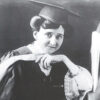

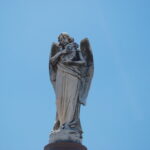
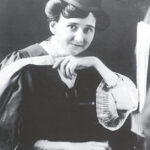

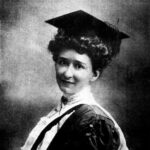

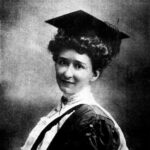
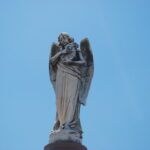
Comments